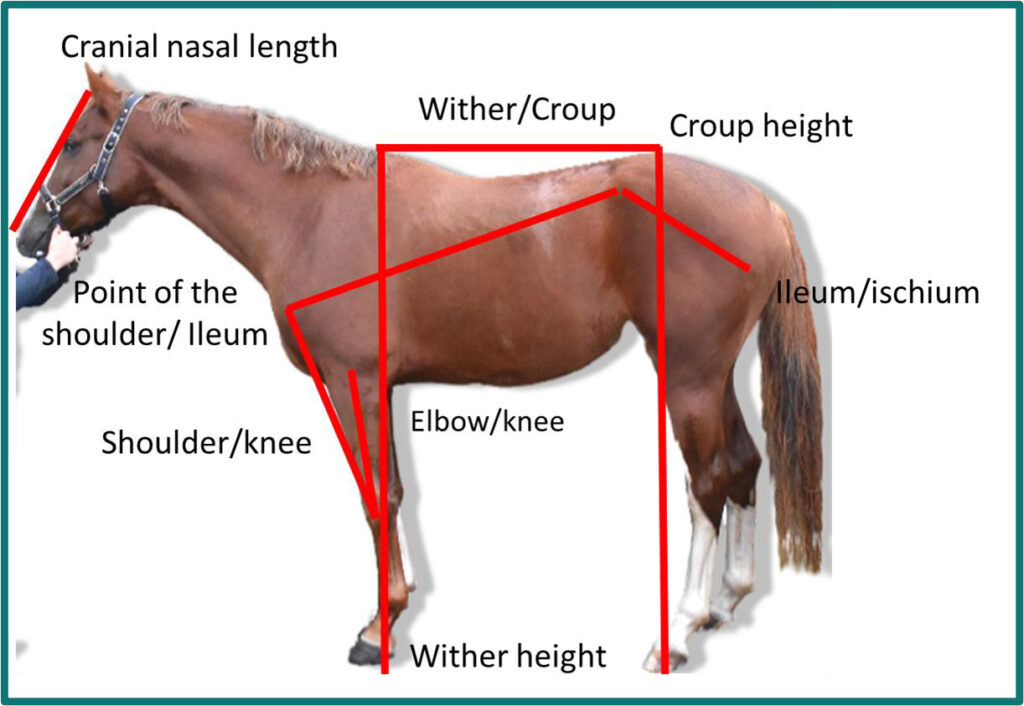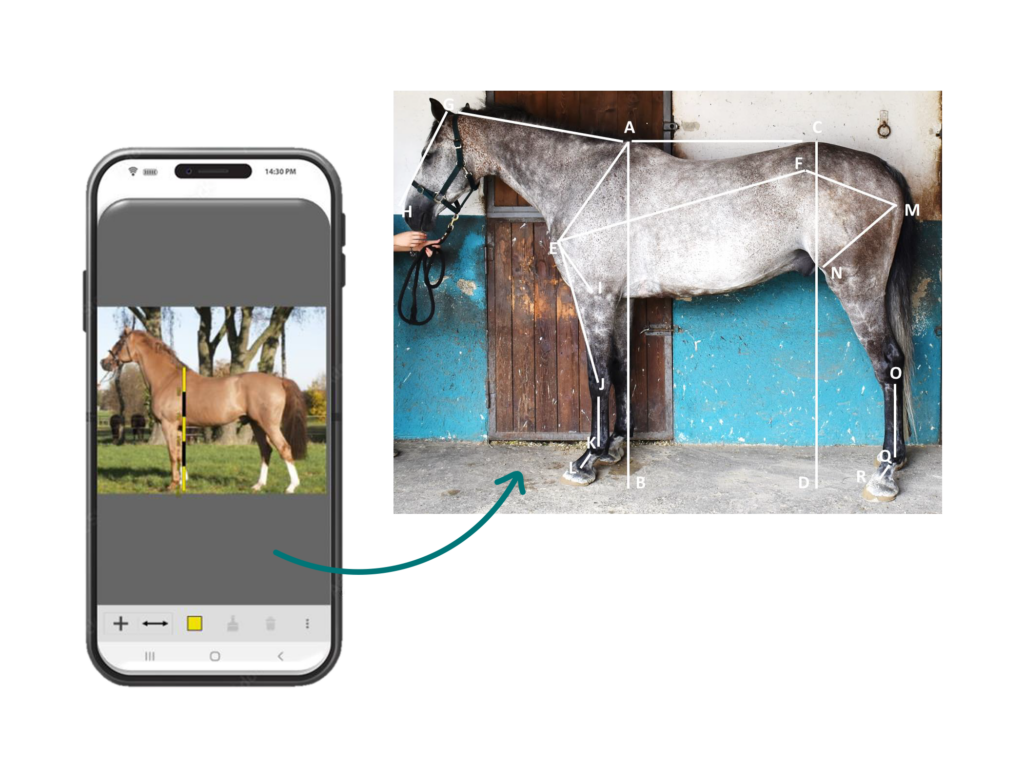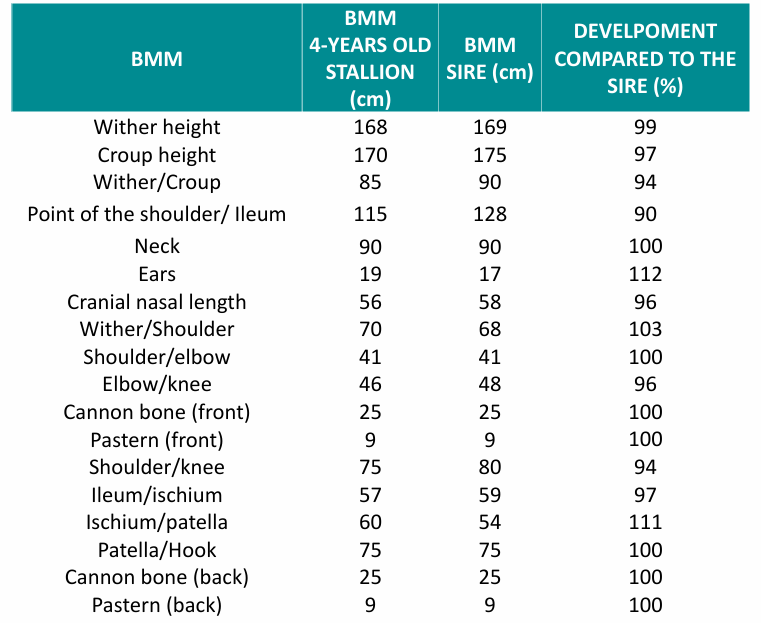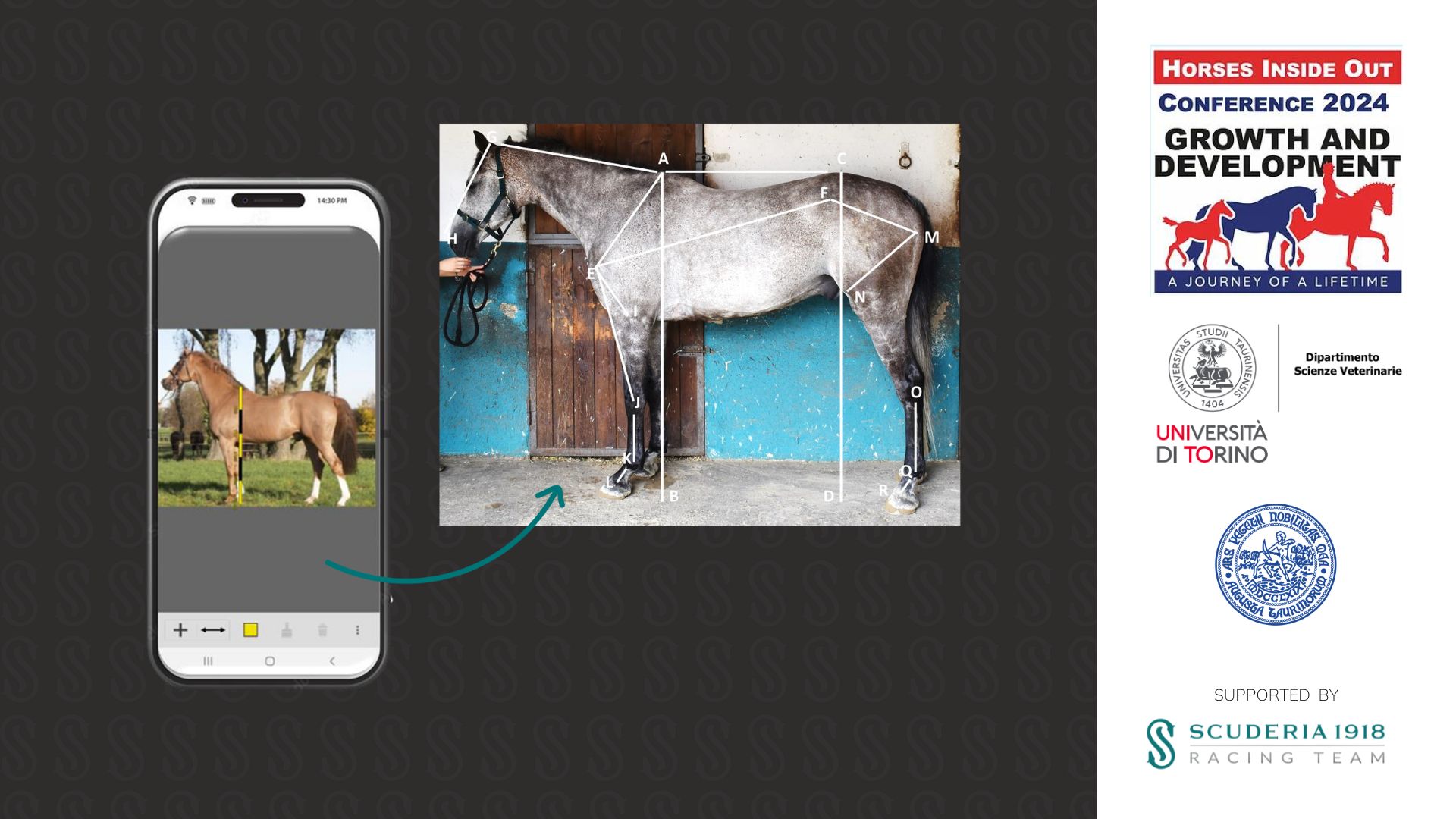A preliminary study on the prediction of skeletal maturity using body morphometric measurements of the sire presented at Horse Inside Out Conference, Loughborough University, Loughborough, United KingdomStudy (2024, 17-18 February).
Study by:
C. Bordin, F. Raspa, M. Greppi, E. Valle (Veterinary Sciences, University of Turin) and M. Tagliaferri, E. Anchisi (Scuderia 1918).
Introduction
Many parameters were proposed to track the musculoskeletal development of horses (e.g. bodyweight, height at the withers, body length).
Aim
This preliminary study aimed to compare body morphometric measurements (BMM) of a young horse and its sire to evaluate skeletal maturity.

In this figure is highlighted the body segments which need to complete their skeletal development. This
horse was at the 99,4 ± 5,4 % of the overall average development. When looking at the BMM measured,
its skeletal maturity appears to be in line with the expected growth according to the literature. [1]
Materials and Methods
A 4-years old stallion was measured to obtain 18 linear BMM according to the current literature [2,3]. Using an image analysis software (ImageMeter® mobile phone application), the same BMM were taken indirectly from the sire (three repetition for each measurements). The height at the withers of the sire (i.e. 169 cm) was used as reference to estimate the other measurements.

STATISTICAL ANALYSIS
A comparison was made between the 4-years old stallion and its sire to evaluate the percentage (%) of development for each of the BMM measured. Mean and ±SD were calculated to assess the overall average development of the young horse.
Results and Discussion
Comparison of 18 linear body morphometric measurements (BMM) between the 4-years old stallion and its sire.

Conclusions
The use of BBM. could represent a valid indicator for the assessment and tracking of skeletal maturity. Attention should be paid to the position of the neck. Could help owners and breeders to take more informed decision about
the management (e.g. nutrition, beginning of training) of their young sport horses.
References: [1] Rogers et al. (2021) Animals 11, 3402. [2] Pinto et al. (2008) Livest. Sci. 119, 161-166. [3] de Sousa et al. (2018) J. Equine Vet. Sci. 64, 34-40.

